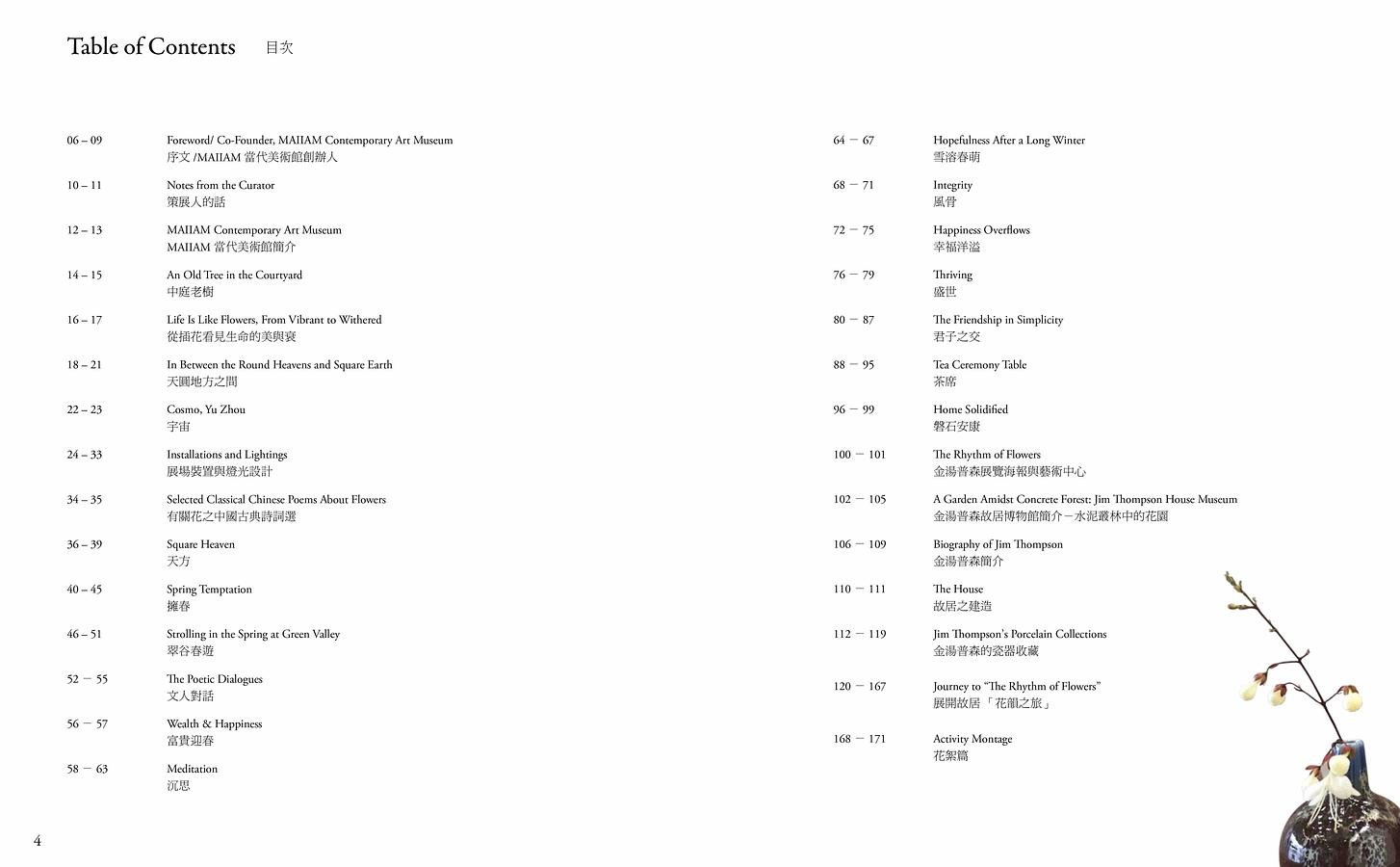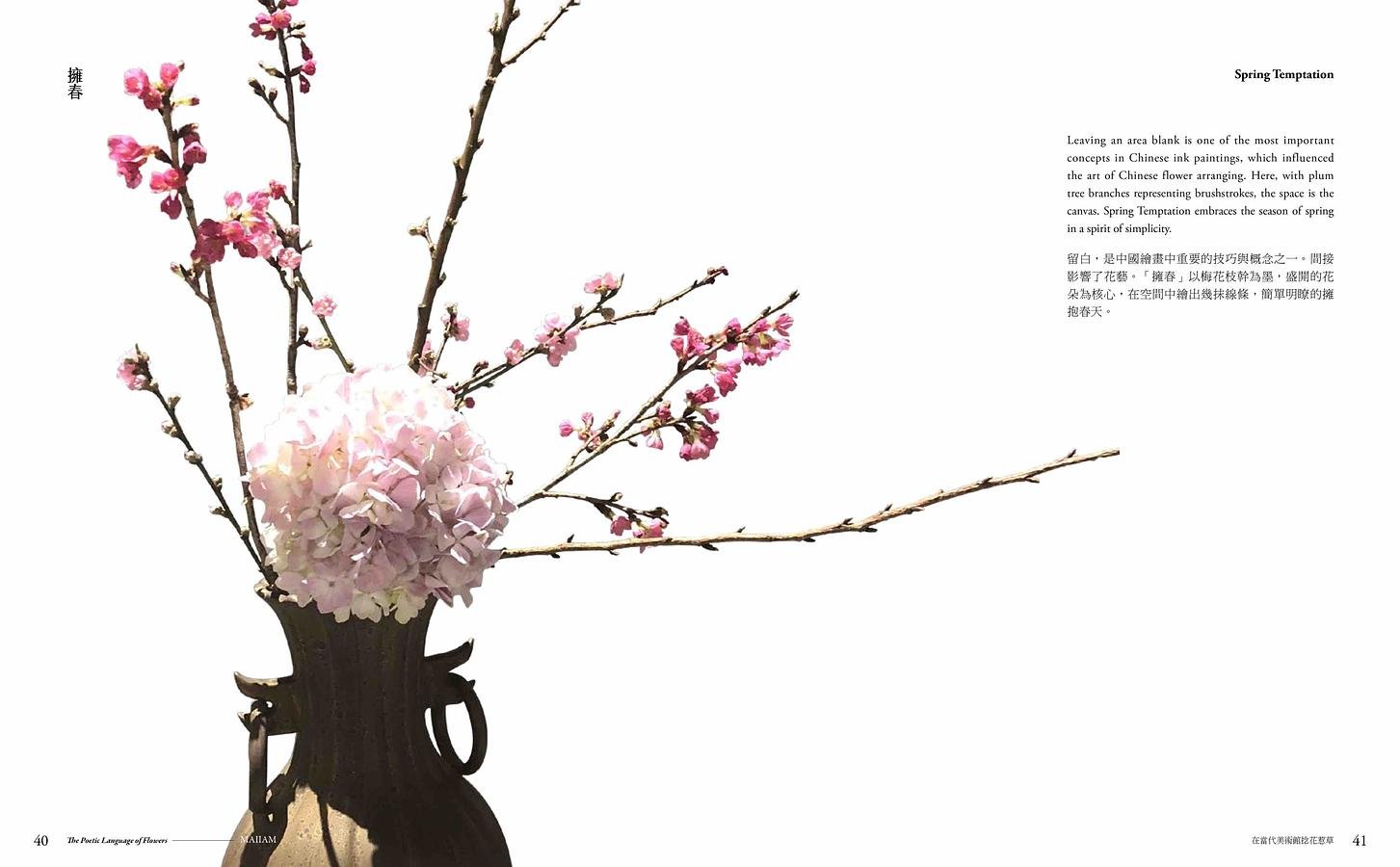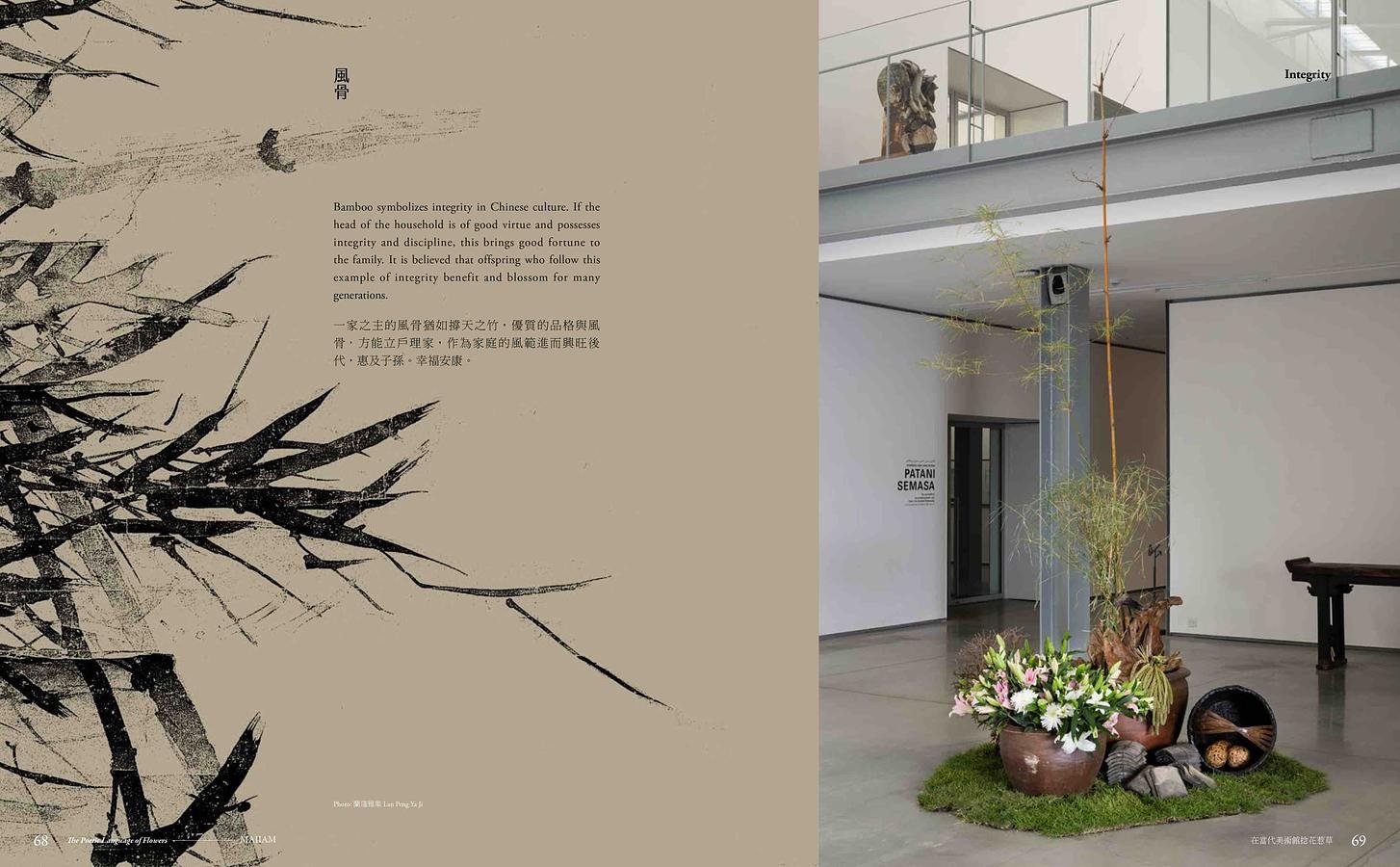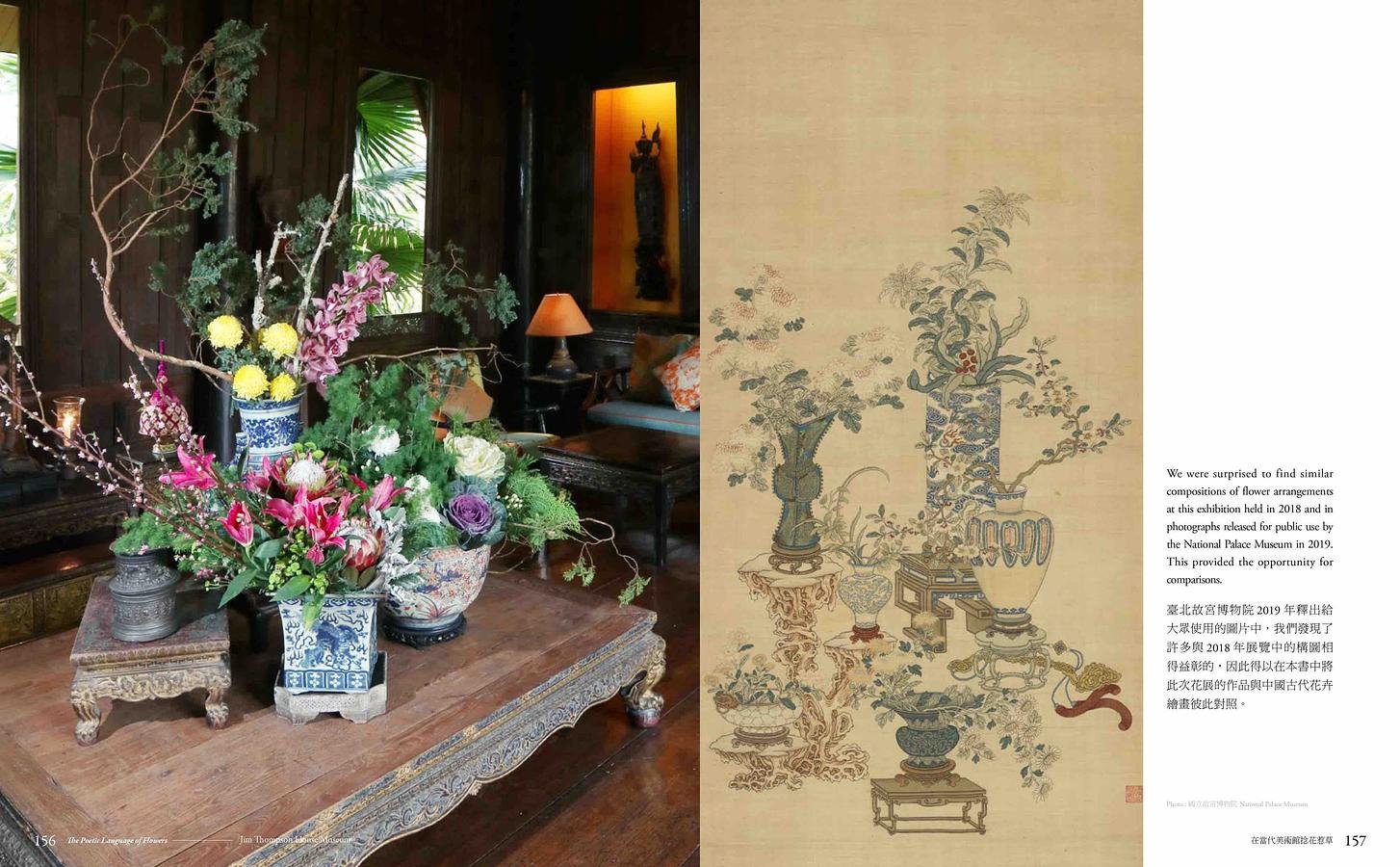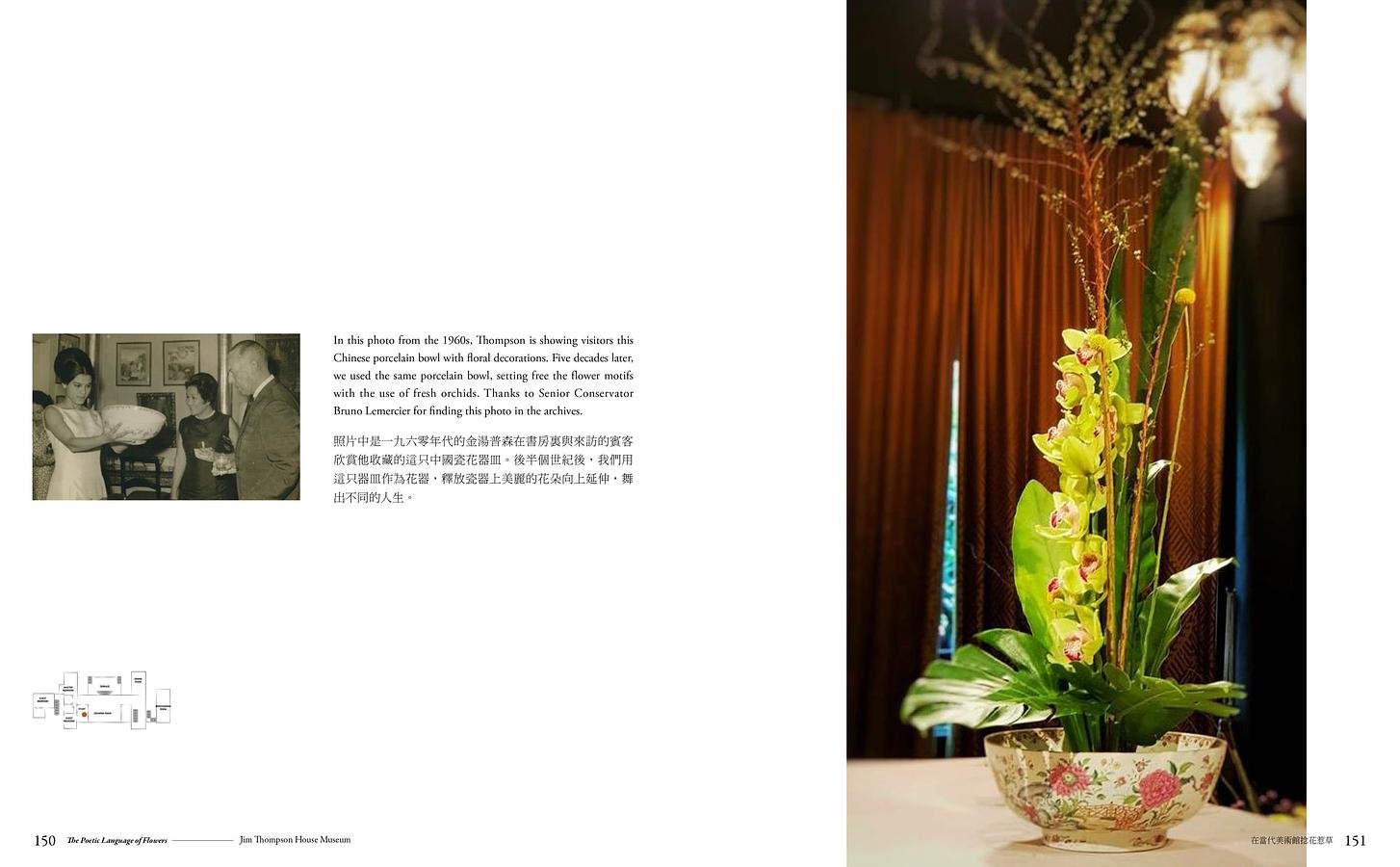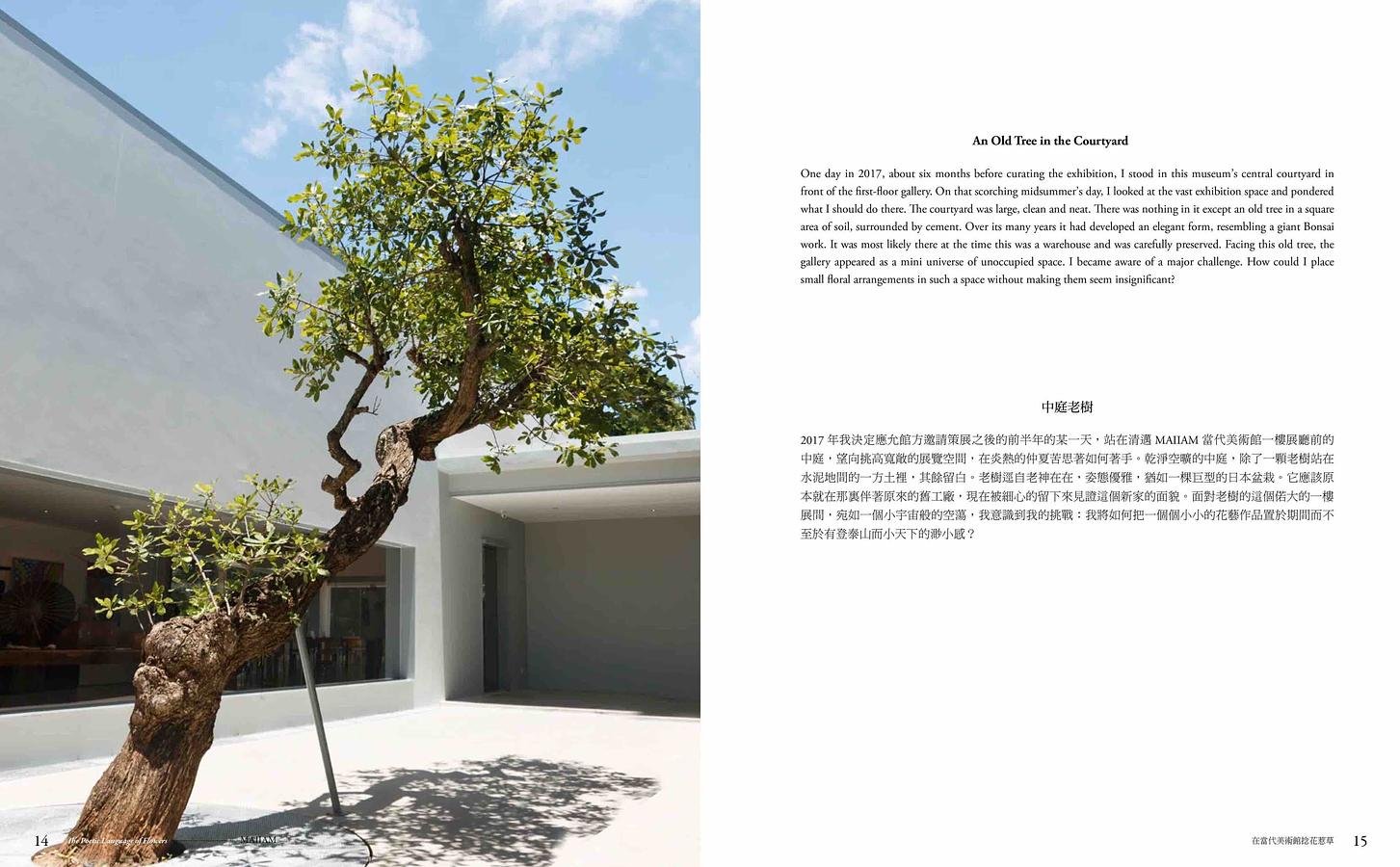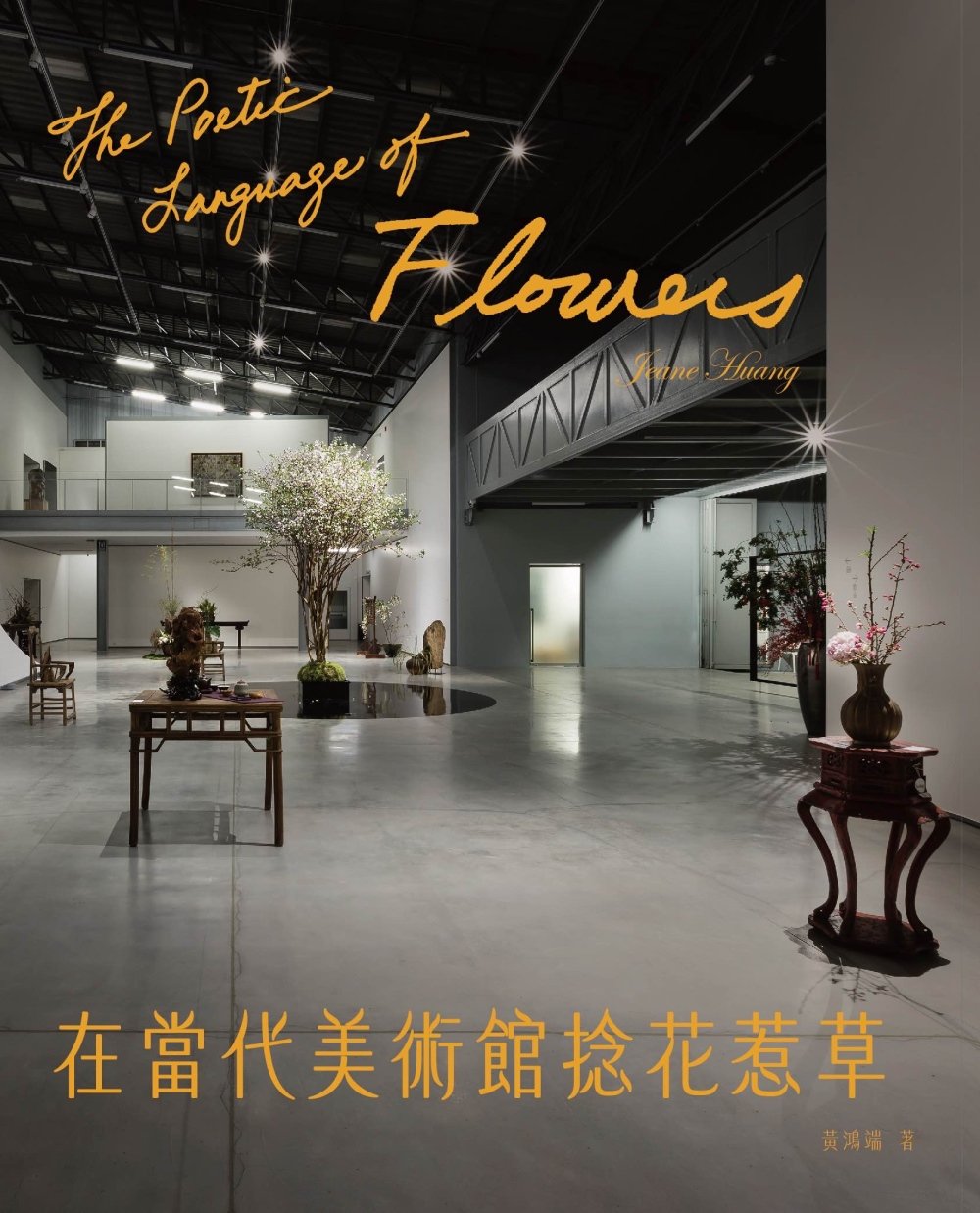
The Poetic Language of Flowers
Foreword
Art lovers in Europe first learned to appreciate Asian flower arrangements during the 1960s and 1970s, but it was almost entirely through works from Japan. The Japanese economy was booming and Japanese institutions sponsored exhibitions of ikebana, as well as those of the kindred arts like calligraphy, throughout the continent. But many Westerners overlooked the fact that the Zen arts originated in China.
Yet those of us who were fortunate enough to visit Taipei's National Palace Museum were awed to experience China's profound legacy in the fine arts, especially calligraphy and paintings by the great masters of centuries past. Among this trove are many paintings and other art objects that depict the art of flower arrangement as originally practiced in China. Taiwanese practitioners today draw upon this rich visual record and other inspiration to keep Chinese floral arranging alive. Mixing spontaneity with artful deliberation, these botanical works evoke calligraphic lines using stems, leaves and blossoms. Often, they convey a sense of harmony between man and nature.
Many Thais and foreign residents like myself came to enjoy such Chinese flower creations during 2007-2010, when Jeane Huang was living in Bangkok, where her husband served as head of the Taipei Economic and Cultural Office. She did marvelous arrangements for display at their home. I suggested someday hosting a flower show at the museum that my stepson Eric Bunnag Booth and I were then planning to establish in Chiang Mai.
MAIIAM Contemporary Art Museum opened in 2016 and in February 2018 our dream came true when we presented the exhibition The Poetic Language of Flowers featuring the extraordinary works of flower master Jolene Jou and curated by Jeane Huang. A related exhibition, demonstration and talk also took place in Bangkok at the Jim Thompson House Museum.
I hope that this catalogue will convey the deep beauty of these floral works.
Each arrangement comes to life as a process of interconnection and emotional resonation between its creator and the audience. If I may quote Marcel Duchamp, "It is the viewer who makes the picture."
MAIIAM Contemporary Art Museum Co-Founder Jean-Michel Beurdeley
